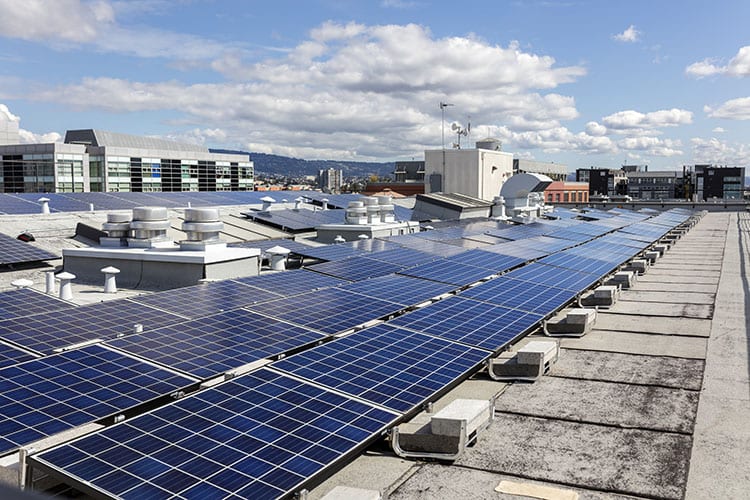Special journal issue celebrates 20 years of open innovation

When it comes to going solar, is it better to buy or lease? For businesses looking to get on the right side of climate change, choosing a provider that offers solar-as-a-service may be more efficient than buying a system outright, according to new research from the Haas School of Business.
Asst. Prof. Jose Guajardo, who has studied the operational implications of service business models in multiple industries, looked at the performance of nonresidential solar systems installed in California between January 2008 and April 2013. Analyzing data collected by the California Solar Initiative rebate program, he found third-party-owned systems enjoyed a clear performance advantage, generating a 4 percent better production yield than installations owned directly by the businesses.
“In California’s solar energy sector, this research establishes a connection between service business models and operational performance,” says Guajardo, who published his results in the Fall 2018 issue of the journal Manufacturing & Service Operations Management.
For businesses, this is no small matter: The scale of solar projects can be enormous. For example, in 2015, Apple Computer announced it was investing $850 million to help build a central California solar farm, using some of the energy generated by the project to power its Cupertino, Cal. headquarters.
Some firms, such as Ikea, are opting for direct ownership; others, such as Staples, have opted to lease. Yet while firms approach the decision based on a range of criteria, including how much they want to invest upfront, there has been little empirical evidence to help them choose between these competing business models.
Part of what makes solar so attractive is that it comes with subsidies to encourage its use: The federal government offers tax breaks, and many states offer additional incentives. California, for example, has offered performance-based subsidies to solar producers in the nonresidential sector. In addition, power purchase agreements—in which the user pays a set rate per unit of energy generated—are commonly used by third-party ownership companies. That means the third-party owner has a double profit motive for boosting energy yield.
Better system design
Guajardo analyzed two strategies that third-party operators can pursue to improve performance: better solar panels or better system design, which means orienting equipment to make the best possible use of sunlight. He found evidence that system design, and not superior panel technology, may account for the third-party advantage. In fact, third-party owners tended to use lower-rated panels, but their better design decisions led to better performance overall.
Guajardo believes there’s a knowledge and skills gap between dedicated solar providers and businesses that run their own systems. “By installing many systems, third-party operators can benefit from learning by doing and economies of scale,” he says.
These results, Guajardo cautions, are particular to non-residential systems that received performance-based incentives in California, and may not apply in places without subsidy programs rewarding performance. He stresses, however, that service business models have been widely used not only in solar energy, but also in several other cleantech markets. Moreover, incentives for adoption of this type of technology have been common in the United States and several other countries.
When it comes to the adoption of solar energy, Guajardo advises businesses to carefully consider how the incentives behind each ownership model can make a difference from an operational perspective.
Posted in:
Topics:



